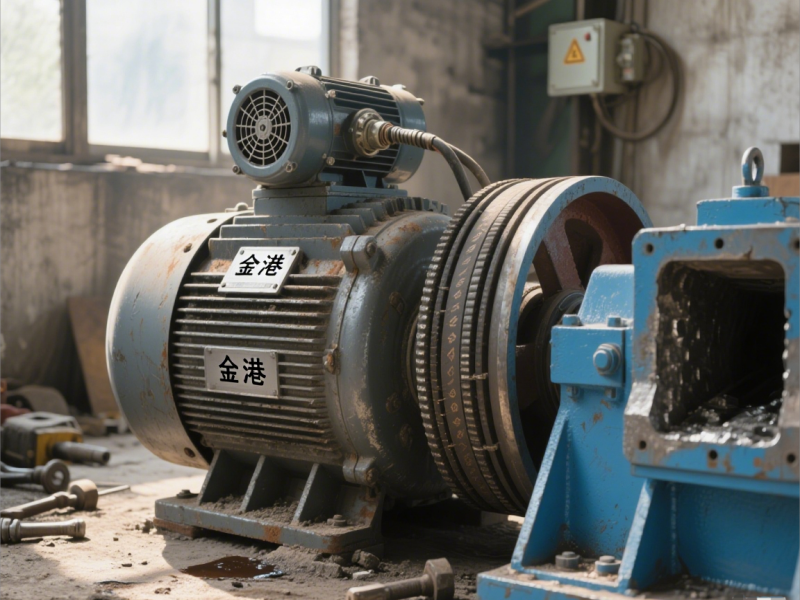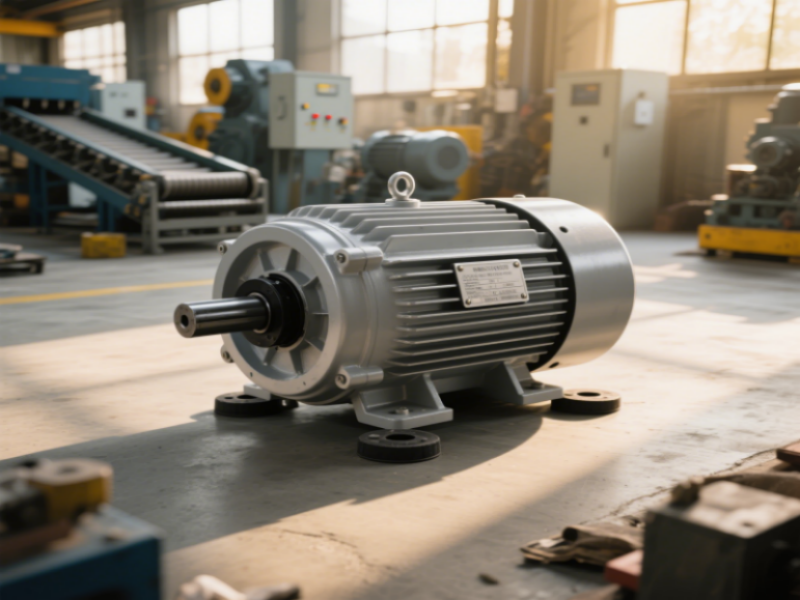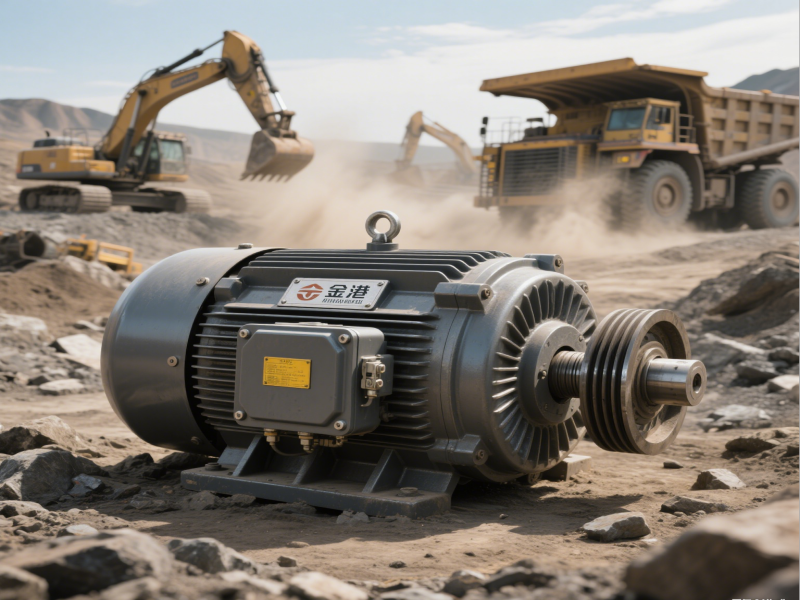How to choose a suitable three-phase asynchronous motor according to the specific needs of the crusher?
Clarify the crusher operating parameters
1.Load type and power calculation
Estimate power according to crusher type
| Crusher Type | Typical power range | Power calculation basis |
| Jaw Crusher | 55~200kW | Jaw size × crushing force × speed ÷ efficiency (η≈0.8) |
| Cone Crusher | 75~315kW | Crushing chamber volume × material density × extrusion frequency |
| Impact Crusher | 75~250kW | Rotor diameter × linear speed × impact energy consumption coefficient |
Power margin principle: Considering the impact load, the rated power of the motor needs to be 1.2~1.5 times the calculated value (for example, if the calculated power is 100kW, select a 132kW motor)
2.Starting and operating characteristics
Starting torque requirement: When the crusher starts, it needs to overcome the static resistance of the material, requiring the motor starting torque multiple (Tst/Tn) ≥ 2.0 times (such as YE3 series motor can reach 2.2 times).
Operating speed stability: The rotor speed of the impact crusher needs to be stable at 800~1500r/min, and the motor synchronous speed should match (such as 4-pole motor synchronous speed 1500r/min).
3.Environment and installation conditions
Protection level:
Dusty environment (mine): IP54/IP55 dustproof;
Wet environment (underground): IP55 splashproof;
Flammable and explosive occasions (coal chemical crushing): Ex d IIC T4 explosion-proof motor.
Installation method: horizontal (B3) or vertical (B5), which needs to match the main shaft layout of the crusher (e.g. B3 horizontal installation is commonly used for jaw crushers).
Key points for selecting core parameters of motors
1.Matching mechanical characteristics
Rotor structure selection:
Deep groove/double cage rotor: improves starting torque, suitable for heavy-load starting scenarios such as jaw crushers;
Cast aluminum rotor: low cost, impact resistance, suitable for small and medium-sized crushers (≤200kW);
Copper bar rotor: higher efficiency, suitable for large crushers (≥250kW).
Bearing configuration: Crusher has large vibration, so it is necessary to select reinforced bearings (such as SKF C3 clearance bearings) and design bearing automatic lubrication channels (such as motors above 315kW).
2.Electrical parameter adaptation
Voltage level:
Conventional industrial scenarios: 380V/50Hz;
Underground mines: 660V/1140V;
Overseas projects: 440V/60Hz (customization required).
Speed regulation requirements:
Constant speed operation: ordinary three-phase asynchronous motor (such as YE4 series);
Variable frequency speed regulation: select variable frequency motor (such as YVP series), with frequency converter (such as ABB ACS580), speed regulation range 1:10 (such as 150~1500r/min).
3.Energy efficiency and economy
Energy efficiency level: follow GB 18613-2020, give priority to motors with energy efficiency of level 2 or above (YE4/YE5 series), which can save more than 15% energy compared with the old YE2 motor.
Cost Comparison
| Motor Type | Procurement costs | Operating costs (10 years) | Applicable scenarios |
| Ordinary YE3 motor | 100% | 85% | Small and medium-sized crushers (≤160kW) |
| High efficiency YE4 motor | 120% | 70% | Large continuous operation crusher |
| Explosion-proof motor | 150% | 90% | Flammable and explosive conditions |
Strategies for dealing with special working conditions
1.Heavy-load starting solution
Soft starter application: ATS48 soft starter is used to reduce the starting current from 6~8 times the rated current to 2~3 times, while smoothly increasing the torque (such as the torque of the jaw crusher gradually increases from 30% to 100% when starting).
Dual motor drive: Ultra-high power crushers (such as above 315kW) can use dual motor synchronous drive to reduce the load of a single motor (such as two 160kW motors in parallel).
2.Protection against harsh environments
Dust protection: Equipped with a detachable dust cover, the spacing between the motor heat dissipation ribs is ≥5mm to prevent dust accumulation (for example, the dust cover of a mining crusher needs to be cleaned every quarter).
High temperature response: Use F-class insulation (temperature resistance 155℃) and add a cooling fan (if the ambient temperature is >40℃, the fan power is increased by 20%).
3.Vibration and shock buffering
Anti-vibration base design: The motor base is equipped with rubber vibration damping pads (hardness 60 Shore A), and the anchor bolts use anti-loosening nuts (such as Nord-Lock washers).
Rotor dynamic balancing level: G6.3 or above is required (for example, the impact crusher motor rotor needs to undergo high-speed dynamic balancing test).
Selection Case
1.Typical selection case
Scenario: A jaw crusher in a mine (crushing quartz stone, feed size ≤600mm)
Parameter requirements:
Calculated power: 120kW, starting torque multiple ≥2.2;
Environment: open-air dust, temperature -10~40℃;
Voltage: 380V, variable frequency speed regulation required (50~100Hz).
2.Selection results:
Motor model: YE4-355M2-4 (132kW, 4 poles);
Features: Tst=2.3Tn, IP55 protection, F-class insulation, compatible with ABB ACS580-01-255A-4 inverter;
Advantages: Energy saving rate 18%, starting current ≤500A (rated current 240A), meeting the requirements of starting with material.
Summary
The selection of three-phase asynchronous motors for crushers should be based on “load characteristics, taking into account energy efficiency and reliability”. The key steps include:
Accurately calculate power and torque, and reserve margin;
Select protection level and structural design according to the environment;
Match the electrical system in combination with speed regulation requirements;
Reduce long-term operating costs through energy efficiency standards.
The final selection needs to refer to the crusher-specific motor selection manual provided by the manufacturer and verify the matching through actual working condition testing.





